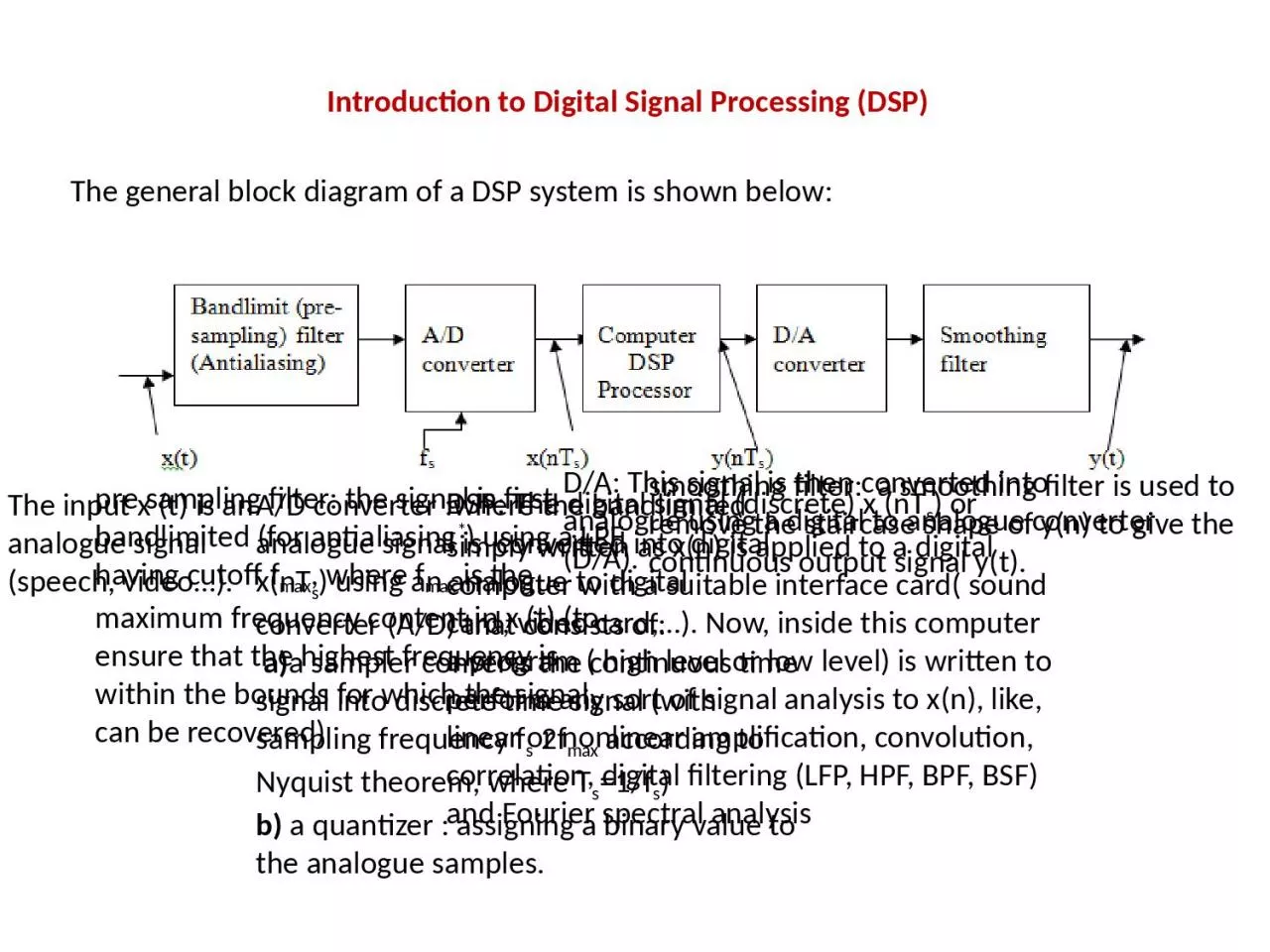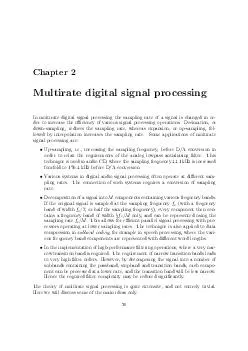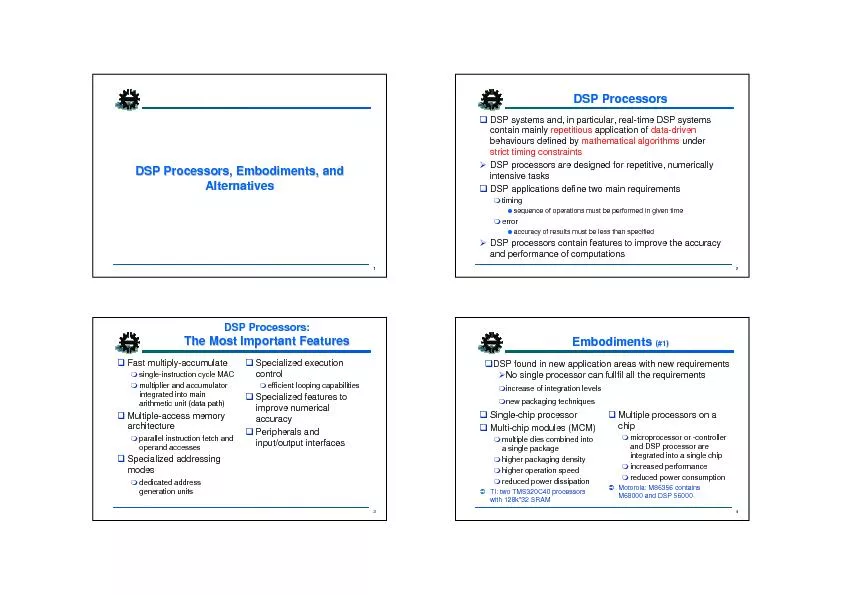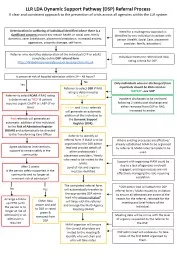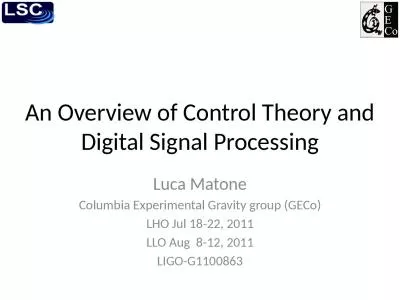PPT-Introduction to Digital Signal Processing (DSP)
Author : roberts | Published Date : 2023-11-09
The general block diagram of a DSP system is shown below The input x t is an analogue signal speech video pre sampling filter the signal is first bandlimited
Presentation Embed Code
Download Presentation
Download Presentation The PPT/PDF document "Introduction to Digital Signal Processin..." is the property of its rightful owner. Permission is granted to download and print the materials on this website for personal, non-commercial use only, and to display it on your personal computer provided you do not modify the materials and that you retain all copyright notices contained in the materials. By downloading content from our website, you accept the terms of this agreement.
Introduction to Digital Signal Processing (DSP): Transcript
Download Rules Of Document
"Introduction to Digital Signal Processing (DSP)"The content belongs to its owner. You may download and print it for personal use, without modification, and keep all copyright notices. By downloading, you agree to these terms.
Related Documents

